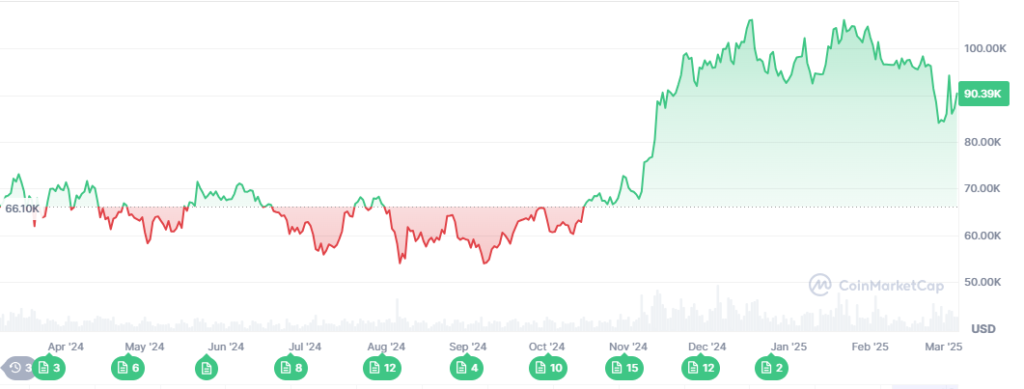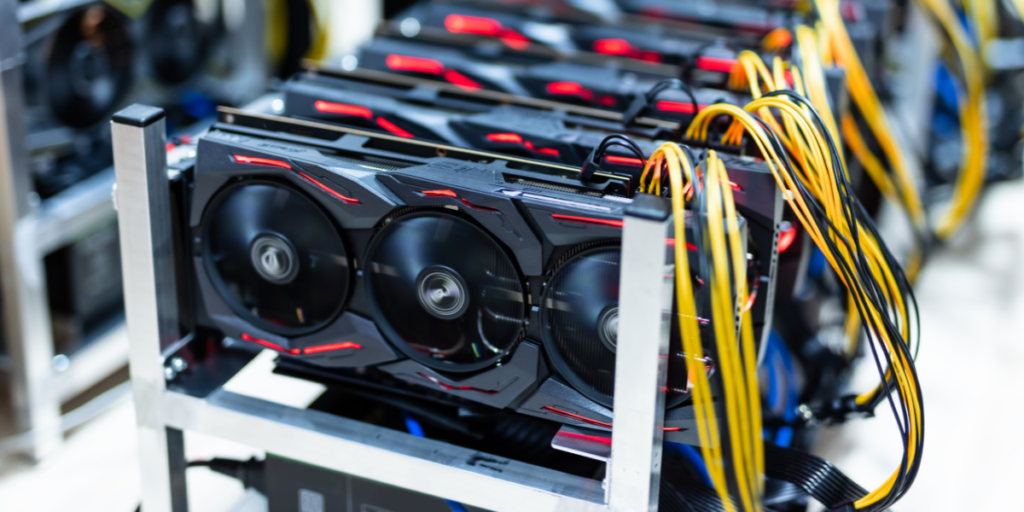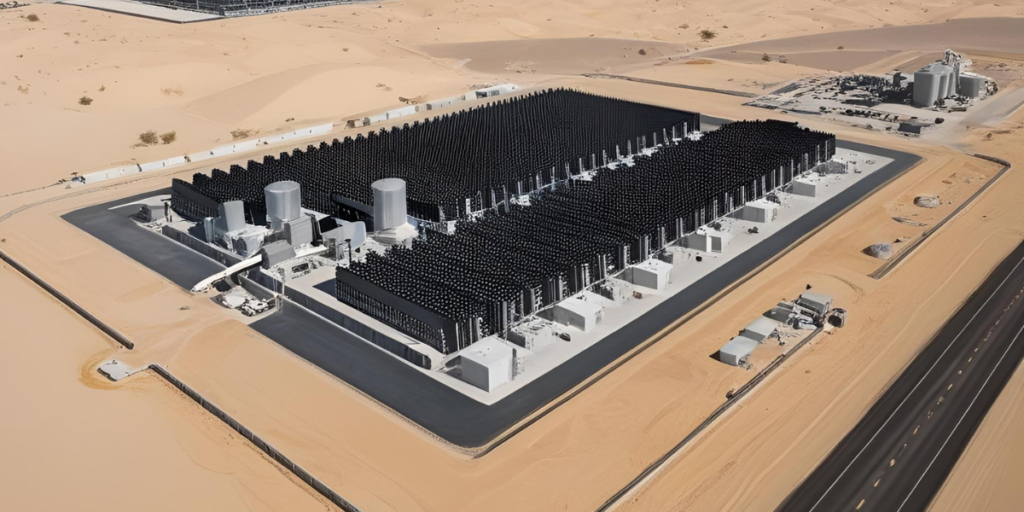Bitcoin mining in 2025 won’t match any expert predictions. Most analysts believe small-scale mining operations will die out. Yet recent signs point to amazing changes that could alter the map of this entire industry.
These changes go way beyond the reach and influence of the 2024 halving. Several groundbreaking developments now challenge what we know about Bitcoin mining’s profitability in 2025. The mining world changes rapidly as quantum computing breakthroughs and surprising geographic movements emerge.
The New Economics of Bitcoin Mining
Bitcoin mining’s financial landscape went through a major change in 2024. Network difficulty hit new records, which cut down rewards for individual miners. The hashprice fell by 75% and transaction fees dropped, making traditional mining less profitable even though bitcoin’s price soared by 120%.
Impact of 2024 Halving on Mining Revenue
The April 2024 halving was a turning point that reduced the block subsidy from 6.25 BTC to 3.125 BTC. Miners faced challenges unlike any previous halving. Competition for block rewards became fierce due to record-high network difficulty. Lower blockspace needs led to smaller transaction fees, which eliminated a vital secondary income source. The hashprice dropped high even as Bitcoin’s value climbed.

Decentralised Mining Pools
The mining industry created sophisticated financial tools to deal with these economic pressures. The hashrate derivatives market became a revolutionary force. Luxor’s hashrate forward market saw OTC volumes jump 500% compared to last year, with contracts going up to 12 months. Bitnomial made history as the first regulated exchange to offer Bitcoin mining derivative products.
These financial breakthroughs let miners:
- Get fixed-price hashrate contracts to secure future revenue
- Lower their risk from Bitcoin’s daily price changes
- Find more stable financing options
Hashrate forward markets have grown similar to energy sector’s commodity futures, where power producers sell contracts early to keep steady income. This rise has led many mining companies to vary into AI and high-performance computing (HPC). HIVE Digital Technologies, Hut 8, Core Scientific, and Bit Digital now run hybrid models that split computing power between mining and AI tasks.
Notwithstanding that, changing to AI infrastructure brings its own set of challenges. AI data centres need much higher capital – millions per megawatt versus hundreds of thousands for Bitcoin mining. Companies like Riot and Cipher Mining are learning about this path, with Cipher getting a £50 million investment from SoftBank to work on AI projects.
The mining industry’s ability to adapt to these economic realities shows its strength. Miners are finding new income streams and ways to manage risk through financial innovation and strategic collaborations. This rise suggests that successful mining operations in 2025 will likely mix traditional mining with advanced financial strategies and other computing services.
Quantum Computing’s Impact on Mining
Bitcoin mining infrastructure faces a radical change as quantum computing appears on the horizon. Traditional ASIC mining and quantum technologies meet at a significant point that will shape the industry’s future.
ASIC vs Quantum Mining Efficiency
ASIC miners lead the Bitcoin mining world today. Companies like Core Scientific and Bit Digital explore new computing models, and the gap between ASIC and quantum systems gets smaller.
The addition of AI workloads to mining operations shows how computing infrastructure keeps evolving. HIVE Digital Technologies and Hut 8 now use hybrid models that optimise computational efficiency across tasks.
Timeline for Quantum-Resistant Mining
The move to quantum-resistant mining infrastructure takes a careful path. Miners like Cleanspark and Bitfarms focus on their original mining operations instead of rushing into quantum integration. This careful strategy allows them to:
- Adapt infrastructure step by step
- Evaluate quantum technologies carefully
- Reduce risks during the change
Traditional vs Quantum Mining
Traditional and quantum mining show clear financial differences. AI and quantum-ready infrastructure needs much more capital investment – often millions per megawatt compared to hundreds of thousands for regular mining setups. This cost difference shapes key decisions in the industry.
Major players take different approaches to this tech transition. Riot stopped its 600 MW expansion to look at quantum and AI capabilities, though this review continues. Cipher Mining got £50 million from SoftBank, which shows strong institutional interest in next-gen mining infrastructure.
Bitcoin mining and advanced computing work together better than ever. Miners can switch back to traditional mining when AI/HPC demand drops, which creates a flexible operation model. This flexibility is vital as mining economics change, especially after the 2024 halving event reduced block rewards to 3.125 BTC.
The future points to successful mining operations mixing traditional and advanced computing abilities. The industry moves toward making quantum-resistant infrastructure standard, though full implementation will take until after 2025.

Geographic Power Shifts in Mining
Bitcoin mining’s power dynamics keep changing as operations expand into unexpected places. Mining companies are moving their facilities to regions that offer unique advantages for environmentally responsible and budget-friendly mining.
Arctic Mining Operations Growth
The Arctic’s harsh climate gives mining operations compelling advantages. Core Scientific guides this northern expansion and converts major power assets into mining facilities. Mining equipment stays naturally cool in frigid temperatures, which cuts operational costs.
Hut 8 and Bit Digital chose to buy existing data centres in these regions rather than build new ones.
The Arctic strategy works well with the industry’s drive toward better efficiency because:
- Natural cooling reduces energy consumption
- Lower ambient temperatures extend equipment lifespan
- Abundant hydroelectric power sources nearby
- Reduced cooling infrastructure costs
Middle East’s Solar-Powered Mining Hubs
The Middle East has become another key mining hub alongside Arctic developments. HIVE Digital Technologies and IREN lead this movement. They bought GPUs to run AI/HPC cloud services in their solar-powered facilities. These operations show a dual-purpose approach that uses infrastructure for mining and advanced computing services.
Mining companies are expanding into the Middle East as part of a broader move toward environmentally responsible practises. Companies like Lancium and Crusoe Energy build multi-gigawatt campuses that employ abundant solar resources. This strategic move gives them clear advantages over traditional mining spots.
Mining power’s geographic redistribution brings new operational models. Riot’s evaluation of its 600 MW Corsicana campus for AI capabilities shows how location decisions now include multiple revenue streams. SoftBank’s recent £50 million investment in Cipher shows growing institutional trust in these emerging mining regions.
These geographic changes matter more as mining economics change after the 2024 halving. Mining companies must effectively make use of information about energy resources, whatever their location. This adaptation will keep profits flowing even as block rewards drop to 3.125 BTC.
Small Miners Make a Comeback
Bitcoin mining has opened up new doors for individual miners through innovative financial tools and hybrid operational models. The rise of mining beyond just large-scale operations creates fresh opportunities for smaller players.
Home Mining Profitability Calculator
Mining economics have taken a new turn after the halving, which makes accurate profit calculations more significant than ever. Miners now look at multiple income streams to boost their returns. They think about both traditional mining rewards and potential AI workload income. The hashrate forward market grew by 500%, helping small miners secure steady income through fixed-price contracts. This protects them against market swings.
New Technologies for Retail Miners
Small-scale miners now tap into the benefits of emerging hybrid infrastructure models. Several approaches have shown great results:
- Buying existing data centres (low risk, steady returns)
- Converting power assets for dual mining/AI use
- Installing GPU systems for flexible computing tasks
These strategies help retail miners make the most of their equipment. They can switch between Bitcoin mining and AI processing based on what the market needs. Companies like HIVE and IREN show this flexibility as they run AI cloud services next to their mining operations.
Community Mining Networks
Community-focused mining initiatives mark a radical alteration in the industry. Core Scientific’s strategic collaboration with CoreWeave shows how smaller miners can use enterprise-grade infrastructure through shared models. The multi-gigawatt project between Lancium and Crusoe Energy creates ways for communities to join large-scale operations.
Small miners utilise decentralised pools to strengthen their market position. These pools offer:
- Access to sophisticated financial tools
- Shared infrastructure costs
- Balanced risk distribution
- Flexible operational models
The industry’s adjustment to post-halving economics works well for retail miners. Block rewards dropped to 3.125 BTC, yet smaller operations stay profitable through strategic collaborations and diverse revenue streams. Companies like MARA, Cleanspark, and Bitfarms prove that focused Bitcoin mining still works, often complementing AI workloads rather than competing with them.
This comeback of small-scale mining operations highlights the industry’s progress toward more inclusive and adaptable models. Individual miners now use opportunities that were once limited to large-scale operations, thanks to innovative technologies and collaborative approaches.

What’s Next for Bitcoin Mining?
Bitcoin mining faces a turning point as we look toward 2025. Many experts missed the mark when they tried to predict where mining was heading, and now we’re seeing some game-changing developments.
The 2024 halving pushed the mining sector to adapt in unexpected ways. The biggest companies now run AI workloads alongside their mining operations. New financial tools like hashrate derivatives help mining operations of all sizes stay stable. These changes matter even more now that block rewards have dropped to 3.125 BTC.
The story of where miners choose to set up shop is just as interesting. Arctic locations naturally keep equipment cool, while solar farms in the Middle East have become green mining hubs. Miners are getting ready for what comes next by building quantum-ready infrastructure in these strategic spots.
Here’s something unexpected – small miners are thriving through community networks and mixed business models. They switch between mining and AI processing, which shows how the industry has become more accessible to everyone.
Moving forward, the most successful mining operations will probably mix old-school mining with advanced computing. This blend of tried-and-true methods and cutting-edge tech shows that Bitcoin mining will stay strong and keep changing beyond 2025.



